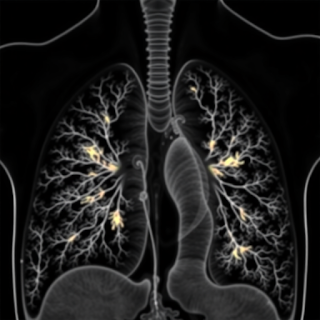New research reveals unusual black carbon build-up in COPD patients’ lungs — even among non-smokers. Pollution may be a hidden, silent culprit.
The Mysterious Carbon Build-Up in Lungs of COPD Patients: What New Research Reveals
For years, chronic obstructive pulmonary disease (COPD) has been synonymous with inflamed airways, breathlessness, and cigarette smoke. But now, scientists have uncovered something unexpected hiding deep in the lungs of COPD patients — an unusual accumulation of carbon particles. This revelation is reshaping how we think about lung damage and pollution’s invisible toll on respiratory health.
Let’s dive into what this means for millions battling COPD — and why this hidden threat matters for everyone, smokers or not.
🚨 The Hidden Intruder: Carbon in the Lungs
What Is COPD, Really?
COPD is a progressive lung disease that makes it increasingly difficult to breathe. It’s commonly associated with long-term smoking, but other culprits like air pollution, secondhand smoke, and occupational hazards are also key players.
For decades, we’ve blamed inflammation and scarring alone for the worsening lung function in COPD patients. But now, researchers are pulling the curtain on carbon build-up, changing the way we understand this debilitating disease.
🧬 New Findings: Carbon Build-Up Unveiled
Black Carbon Found in Lung Immune Cells
In a groundbreaking 2024 study published in The Lancet Respiratory Medicine, researchers analyzed lung tissue samples from COPD patients and made a startling discovery: macrophages — the immune cells that guard our lungs — were packed with black carbon particles.
🔎 Reference:
Tomaselli, C., et al. (2024). "Black Carbon Accumulation in Alveolar Macrophages of COPD Patients Linked to Pollution Exposure." The Lancet Respiratory Medicine. Link
What’s more alarming? These particles were found even in non-smokers with COPD who lived in polluted urban environments.
🌫️ Where’s It Coming From?
While cigarette smoke is an obvious culprit for smokers, urban air pollution — especially fine particulate matter (PM2.5) and black carbon from car exhausts, coal-burning, and industrial emissions — is now firmly in the spotlight.
-
Traffic-heavy cities: Major source of black carbon.
-
Indoor air pollution: Especially in areas using biomass fuels for cooking.
-
Occupational exposure: Industries like mining, construction, or factories.
Even brief exposure in polluted areas can result in microscopic carbon deposits accumulating over time in lung tissues.
🩺 How Does This Carbon Affect COPD?
Immune Dysfunction and Inflammation
Macrophages overloaded with black carbon become sluggish. Instead of clearing debris and infections efficiently, they trigger chronic inflammation, making it harder for patients to fight off respiratory infections — a common and deadly complication in COPD.
Lung Function Decline
Carbon accumulation adds another layer of damage, potentially accelerating lung tissue destruction beyond what’s seen from inflammation alone.
✅ Key takeaway: Pollution-induced carbon build-up could partly explain why some non-smokers develop severe COPD symptoms.
🌍 What Does This Mean for You?
Whether you have COPD, know someone who does, or simply care about clean air, this discovery is a wake-up call.
-
For patients: Discuss air pollution exposure with your doctor. Indoor air purifiers and avoiding polluted areas on bad-air days can help.
-
For policymakers: It’s more evidence that urgent action on urban air quality is not optional — it’s a global health necessity.
-
For everyone: Even healthy lungs can accumulate black carbon over time. Protect your breathing space whenever possible.
🌱 Where We Go From Here
Scientists are now looking into therapies that could target or remove carbon build-up from the lungs, alongside better pollution control policies.
As we learn more about this silent threat, one thing’s clear: COPD is no longer just a smoker’s disease. Pollution’s fingerprint is all over it.
Related:
📝 How Air Pollution Ages Your Brain
📝 Why Clean Air Might Be the Next Big Health Breakthrough
🌬️ Final Thoughts: Breathe Easy, Stay Informed
Understanding the full picture of COPD means we need to look beyond just cigarettes. It’s time we demand cleaner air and better health protections — because what we can’t see is hurting us.
💬 What’s your experience with air pollution or COPD? Join the conversation in the comments.
Tags: #COPD #LungHealth #AirPollution #ClimateAndHealth #RespiratoryHealth #Science #PublicHealth











Comments
Post a Comment